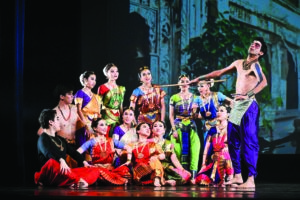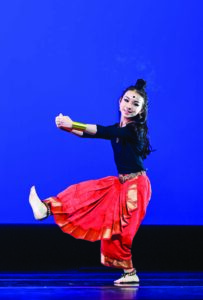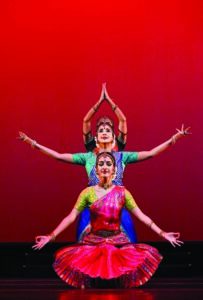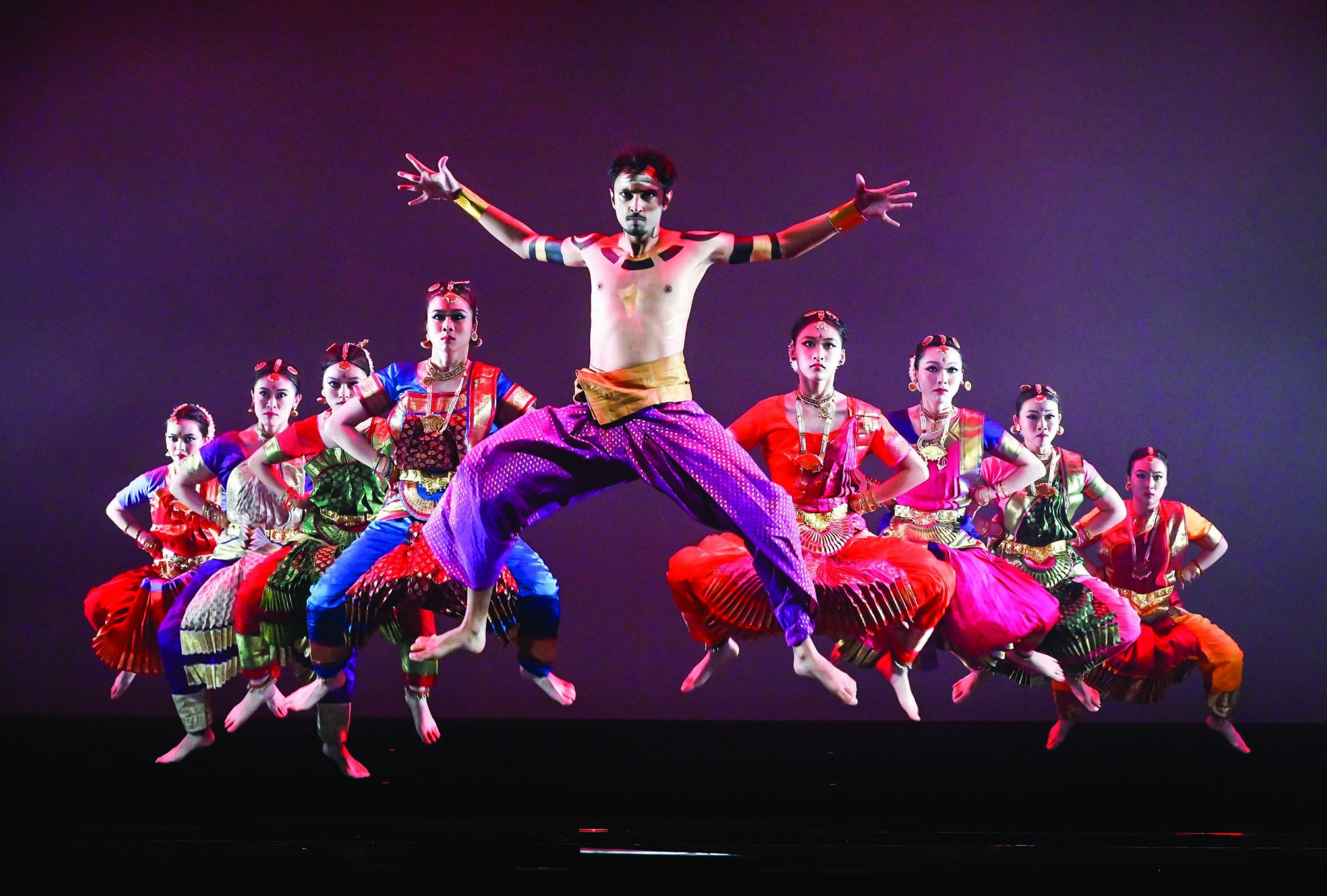Dance patrons in Hong Kong were privy to a rare treat in late April when Keelaka Dance Company presented its show ‘Unmasked: When Ravana Walked the Earth’. The show was a collaboration between Keelaka Dance Company and the Alan and Becky Dance group where Indian and Chinese dancers together performed Bharatanatyam at the prestigious Y theatre. The Keelaka Dance Company, New Delhi, founded by Jyotsna Shourie and Aneesha Grover, trained the Chinese troupe online for several weeks before the presentation.
Speaking about ‘Unmasked’, Grover, who is also the show’s producer, writer as well as the actor who plays the role of Sita, says, “This is a time travel dramedy told through contemporary Bharatanatyam. A curious millennial is sent back in time to the Treta Yug, to witness the Ramayana unfold in Lanka. Inspired by the many versions of the Ramayana – Valmiki Ramayana, Adbhuta Ramayana, Kamba Ramayana and Adhyatma Ramayana – the production is an ode to this great Hindu epic. Two parallel stories unravel as the student questions age-old stereotypes of good and evil while complex nuances of the Ramayana emerge. The format is a melange of Bharatanatyam and contemporary dance, mythology and fiction, comedy and theatre.”
On the occasion, the founders spoke exclusively to Sunday Guardian. Excerpts from an edited interview:
Q. Why did you launch Keelaka Dance Company?
Aneesha Grover (AG) : Keelaka Dance Company was born out of our friendship. Though formally incorporated in January 2024, we have been working on productions together for the past 15 years. The idea behind Keelaka is to tell ancient Indian stories through a modern lens. We had begun to notice a decline in the number of young people attending Bharatanatyam performances and realised that something needed to change. If we are to keep this ancient art form alive, we had to keep the next generation in mind while creating our productions. The youth of the country now has Netflix and amazon on their fingertips, so if we have to keep them interested in classical dance, the storytelling must be engaging. We love
Jyotsna Shourie (JS): I found that in North India, audiences for traditional Bharatanatyam performances were dwindling. This was mainly because the music, the lyrics and the language of dance or mudras synonymous with the art is unfamiliar to them. Therefore, to revitalize a performance, we used more universally accepted components and blended them into our traditional format. Melodious ‘alaaps’ and ‘swaras’ thus formed the major part of the sound track, vibrant rhythms with a variety of percussion instruments were used for abstract dance sequences and new age music and sound was infused. As we also wanted to break stereotypes, different dance forms, both traditional and contemporary were present so that as artists we could explore the frontiers of classical dance.

Q. Where did the idea of ‘Unmasked’ stem from?
JS: I knew I wanted to depict Ravana using the framework of the Ramayana, yet I needed to showcase a different side of his temperament, not just the usual ten-headed demon. He was a great bhakt of Shiva who granted him numerous boons and weapons to be victorious in every battle. It is believed that he was the great grandson of Lord Brahma, and looked to him for a blessing that would enable him to rule the three worlds. He was also a brilliant strategist, intellectually gifted and so on. This doesn’t mean we wanted to downplay his egocentric, violent, lustful nature. We wanted the audience to have a more holistic picture of Ravana and not a biased one. They would then be able to answer the question whether he was truly good or decidedly evil.
AG: That being said, this is a story we all have seen/read/heard millions of times growing up! So to make it interesting I researched a few different versions of the Ramayana and fused them to make for the juiciest narrative. We also introduced two time travellers – millennials, who as actors go back in time to the Treta Yug to take the audience through the story but offer a nuanced and humorous perspective on good and evil, that is relevant in today’s context.
Q. With so much negativity and hate being spewed around the world, how important is it to foster such cross-border collaborations through artistic practices?
AG: I believe that art should rise above borders and politics, and dance in particular serves as a unifying tool because the language of dance transcends borders and linguistic barriers. We hope to do such cultural exchanges of this with other countries going forward.
JS: Such collaborations serve as powerful tools for promoting understanding, unity, and friendship, by bringing diverse people together to understand and appreciate art. Such collaborations can help break down cultural barriers and promote appreciation for diverse traditions. We should work towards world art where artistic creations from various cultures and regions around the globe come together in the spirit of harmony and mutually benefit each other.

Q. What were the challenges of putting up this unique collaborative show?
AG: We have been teaching Bharatanatyam to the dancers of Alan and Becky Dance Group for over a decade, through both online and in-person workshops. But this time we had to teach them the choreography online as well. We only reached Hong Kong two days before the show! Since this was the first time they were wearing traditional Bharatanatyam attire and make-up, we had to teach them the procedure of getting ready online as well. Fortunately, the dancers practiced so diligently and were very precise with their movements.
Further, a lot of our script relies on humour which was originally written for an Indian audience so we had to rewrite a huge chunk of the script for the audience of Hong Kong to be able to enjoy it. This made us learn a lot about the culture, current affairs and popular trends of Hong Kong. The team there actually made a family tree flow chart of characters from the Ramayana to give the audience some context.
JS: The biggest hurdle we faced was the language. While English is understood, it is not spoken fluently. With the dance there was no issue. The Alan and Becky Dance Group dancers are really professional and hardworking and so this was easily done.

Q. How was the show received?
AG: We were lucky to do two shows over the weekend in Hong Kong and they went fabulously well! The audience enjoyed this rendition of the Ramayana and understood the humour despite the language barrier. After the show we did a 30 minute Q and A with the audience members. This spilled over to almost an hour each day because the audience had so many questions about the mudras, the technique and the history of Bharatanatyam and even the Ramayana.
Noor Anand Chawla pens lifestyle articles for various publications and her blog www.nooranandchawla.com.

